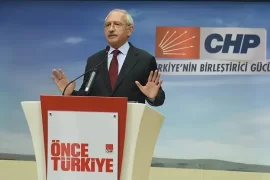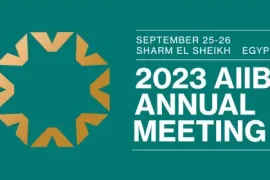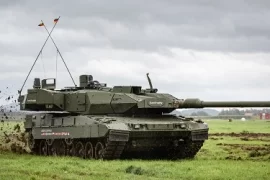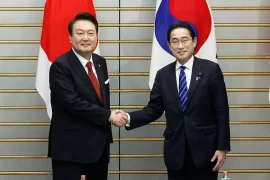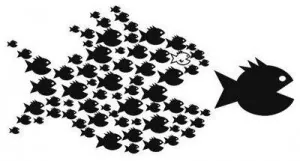
Remember Felani? Sure, how could any Bangladeshi, or any human being for that matter, forget Felani incident? The body of a fifteen year old girl hanging over the barbed wire fence, like some piece of cloth hanging from a clothesline. How often do we come across such gruesome image, except of course more heart wrenching pictures of Syrian refugees, killing of Palestinians by Israeli forces across the Palestine-Israel border, or pictures from different terrorist attacks throughout the world, including Paris, Nigeria and the most recent in Cairo and California. However, the difference is that those events are related to some state of war or acts of terrorism. Whereas the death of Felani was not a consequence of any such incidents.
Was Felani a terrorist? Was she plotting an insurgency against India which made her a threat to national security? Or, does she look like the mastermind of a notorious criminal gang? The answer is a big “No” to all of that. And the questions couldn’t be any more absurd. Then what was Felani punished for? With her body so feeble that looked like a twelve year old’s, she was not even involved in any illegal trafficking, smuggling, stealing or trade, let alone terrorism.The answer lies on the policies from the other side, that is, our mighty neighbor India.
BSF cannot itself be the judge and killing the unarmed people only amounts to extra-judicial killing.
The controversial shoot-on-sight policy enforced by the Indian border patrols, the Border Security Force (BSF), has led to indiscriminate killings of hundreds of innocent Bangladeshis who were probably working in fields near the zero line unaware of the border or have mistakenly stepped into Indian territory while foraging for fire wood or in search of their stray cattle.In recent years tensions have arisen along the Bangladesh-India border, with claims from the Indian side on increase in cross-border smuggling, cattle-rustling and illegal migration. It is true that Felani was trespassing the border and this has legal bearings. And in many cases, there might be smugglers or perpetrators of other criminal activities among those being killed, but they need to be caught first, brought under judicial processes, before being punished, detained or executed. The question is, who is doing the judgments? BSF cannot itself be the judge and killing the unarmed people, like Felani incident, only amounts to extra-judicial killing.
FENCING THE BORDER
The border between Bangladesh and India has long been a source of contention between the two countries. Sharing an international border of 4096 kilometer (2545 miles), it is the fifth-longest land border in the world. Being highly porous with dense population almost extending up to the zero point on both sides, the border is often used as an open route for movement of people and trade. Besides, as with other border areas between countries, illegal activities such as trespassing and trafficking of goods and contraband products do take place as a regular affair.
Most importantly, for a long time there have been accusations on the Indian side of a large number of illegal immigrants crossing from Bangladesh into India, which has led to the shoot on sight policy enforced by the Indian patrols. It might be noted that cross-border migration was high on agenda of the NDA government and it was one of the major poll issues before it came to power. In retaliation of the allegedly massive illegal immigration from Bangladesh to India, our neighbor sanctioned constructing the Indo-Bangladeshi Barrier, a 3406 kilometer fence of barbed wire constructed at 150 yards from zero point on Indian side. Out of this, 2529 kilometer of fencing was completed at the cost of 430 million USD by November 2007.
Initially the deadline of the project was set to 2008-09 and by October 2009, about 2649 kilometer of fencing along with about 3326 kilometer of border roads were completed. The deadline of the project have been revised several times so far, and in October 2015, India’s Cabinet Committee on Security (CCS) sanctioned a Tk 52.8 million project which includes 200 kilometer of border fencing and 400 kilometer of road, among major initiatives. The deadline of border fencing project was also extended till 2019, as the March 2014 target could not be achieved. Although 88 percent of the total fencing work has been completed until now, work in many areas has been stalled mainly due to protests by local people, land acquisition problems or because of difficult terrains. So the big question is what is to be achieved by this big project?
TRADE,TRAFFIC, TERRORISM
Among other bilateral issues, a spawning informal trade along the remarkably porous border has been a major concern at the Indian side. Though as with most shadow economies, exact numbers are difficult to discern, statistics show to India’s favor. There is 3.2 billion USD of informal trade or Indian smuggled goods coming to Bangladesh while goods amounting to 300 to 400 million USD go to India from Bangladesh –which is almost as big as the formal bilateral trade between the two countries. The fact is, be it cattle or consumer goods, informal trade in this region typically involves illegal transactions with the participation of local residents and enforcement agencies, either through small-scale bootlegging or larger smuggling syndicates and the goods have to pass the Indian fence first. Critics point out that there is some kind of a state sponsored smuggling along the borders. Therefore, the border fences may only be used to regularize informal trade instead of stopping it.
Illegal migration from Bangladesh has always been high on the agenda from the Indian side in the bilateral discussions between the two countries. Whether the fence has contained the allegedly massive illegal migrations is debatable, but it surely has divided the lives of the people on its own side. While drawing the fence on paper, human lives must have been the last of the priorities, and thus there are people whose houses have fallen in the no man’s land-obviously the wrong side of the fence- while their fields and livelihoods lie on the other side. And when they need to cross from one side of the fence to the other, they have to pass though gates which are only available at every kilometer distances and which only open for one to two hours, twice or thrice during an entire day.
In several places, the local people protested against the barbed wire fencing with Bangladesh, which have been largely ignored by the administrators. Recently villagers in Sonamura in western Tripura strongly opposed the fencing project in between Kulubari and NC Nagar area, which is opposite to Comilla region in Bangladesh. Though for law enforcers this area is infested with smugglers, but for locals their livelihood is at stake if the area is fenced off from Bangladesh. And of course, there are numerous accounts of atrocities carried out by Indian forces along the border. In a Human Rights Watch (HRW) report called “Trigger Happy”, uncountable abuses of BSF were published, compiled from interviews taken from victims of BSF tortures, witnesses, members of BSF and its Bangladeshi counterpart. According to the report, over 1000 Bangladeshis were killed during a period of 2000-2010. Among those victims is Felani, whom the BSF force killed and hanged her dead body over the fence on 7 January 2011. If anything, the fence has facilitated only in endangering the lives of its own people as well as the innocent lives of people on our side.
Despite Bangladesh’s positive role the fence only stands as a symbol of mistrust and division between the two countries.
The north-eastern regions have long been a troublesome area due to prevailing extremism, terrorism as well as ethnic conflicts. The Indian side had been concerned over many terrorist groups who find safe haven in the hilly forest regions in Bangladesh and Myanmar, where they establish camps to recruit and train foot soldiers. In November this year, the Naga militant group NSCN (K) rebels ambushed on the Dogra regiment of the Indian army along the Indo-Myanmar border, killing 8 of them. Given these concerns the government is taking several steps to stop cross border movement of insurgents and smuggling of weapons and drugs, and have also signed agreements with Bangladesh on several fronts.
Very recently, in mid November, Bangladesh and India agreed on intelligence sharing on any kinds of militancy. Besides, Bangladesh had been actively responsive of India’s security concerns and have arrested and deported one of its most wanted insurgent activist Anup Chetia and have promised handing over other detained criminals as well. Despite Bangladesh’s positive role the fence only stands as a symbol of mistrust and division between the two countries. What needs to be done is both countries need to educate their people so that they abide by all international regulation and do not make attempts to cross the borders illegally. This would ease the task of both BGB and BSF and help distinguish between the real perpetrators of crime.
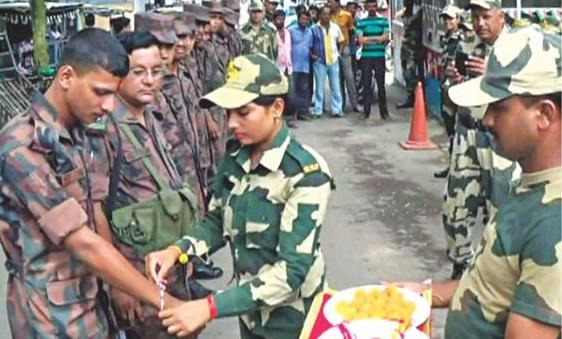
COLLABORATION BETTER THAN CONTENTION
Yes, that’s the mantra we need to believe in and aspire to reach to our neighbors. It is the duty and right of each country to maintain its territory and prevent unwanted traffic but its right cannot be understood as unlimited or unchecked.Besides, being built mostly along main roads between the two countries, the government of Bangladesh had been strongly opposing its neighbor’s initiative to fence its border. More importantly, under any circumstances, state sovereignty and national security concerns do not permit a state to violate non-degradable human rights and other fundamental rights enshrined by customary international law or jus cogens norms. Detainment, torture and killing cannot be an explicit policy of a country and such incidents need to be reduced to zero figures. State conduct should function in harmony with international human rights treaty and customary obligations.
We may hope to find justice for Felani and bring down the walls of suspicion and separation.
Read also: THE 10 COUNTRIES MOST IMPACTED BY TERRORISM
Both India and Bangladesh are State Parties of International Covenant on Civil and Political Rights (ICCPR) which stipulates that State Parties not only respect the fundamental human rights but also ensure their enjoyment through concrete implementation plans. The Human Rights Committee which monitors the state’s compliance with the ICCPR emphasizes that the rights enshrined in the ICCPR must be guaranteed to every person within a state’s territory and under its jurisdiction regardless of his or her citizenship or statelessness. Therefore, we may hope to find justice for Felani and bring down the walls of suspicion and separation. As long as there are so many differences between countries, people will try to cross the line and fencing cannot be the ultimate guiding norm to people’s lives. It is this process of free flow of goods, people, ideas, knowledge and technology that can bring prosperity and equality to communities and countries.

